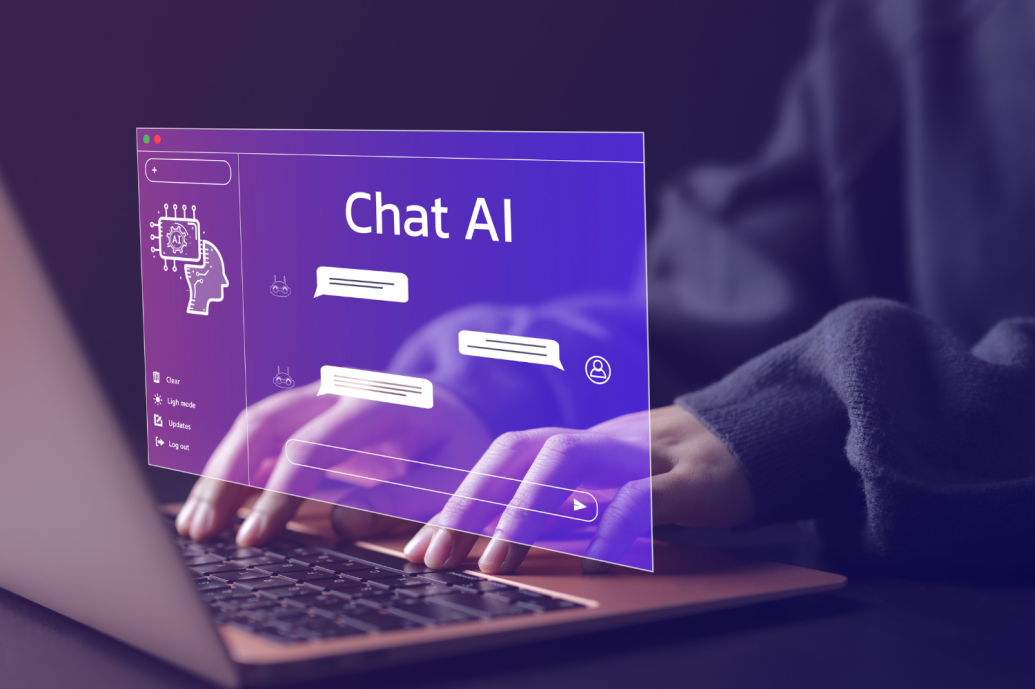How Artificial Intelligence Powers Modern Businesses
Artificial Intelligence – How Does It Integrate Into Your Business?
If you’ve scrolled through the news or browsed tech sites lately, you’ve probably heard a lot about artificial intelligence or AI, as most people call it. From chatbots handling your bank queries to voice assistants telling you the weather, AI technology seems to be popping up everywhere. But what exactly is artificial intelligence? How does it fit into different industries, and what’s the business case for using it? Let’s explore these questions and more.
In this blog, we’ll break down the fundamentals of AI, focusing on NLM (Natural Language Models) and generative technologies. We’ll also look at which industries and business sizes are using AI, show how AI helps day-to-day operations, and discuss the return on investment you might expect. By the end, you’ll have a clearer picture of where AI stands today and why it’s more than just a passing trend.
What Is Artificial Intelligence?
The term artificial intelligence might bring to mind futuristic robots, but in everyday business settings, it’s more about using algorithms and data to automate tasks or provide insights that humans alone might struggle to uncover. At its core, AI refers to computer systems that can perform tasks normally requiring human intelligence like understanding language, recognizing patterns, or making decisions based on complex inputs.
NLM (Natural Language Models)
One subfield of AI that’s gained immense traction is natural language processing (NLP). NLM, or natural language models, are advanced algorithms that understand, generate, or interpret human language. These models can read text, answer questions, and even create new content. You’ve probably encountered NLM technology when using chatbots on a customer service website or voice assistants on your phone.
Generative AI
Another buzzy term is generative AI. While NLM focuses on understanding and generating language, generative AI can produce all sorts of content—from images to music and even software code. Generative AI models learn patterns from huge sets of data and then create original outputs that mimic those patterns. A simple example is an AI-driven art tool that can produce realistic-looking paintings based on prompts.
Top Mainstream AI Technologies
So, who’s leading the pack in AI right now? Some well-known players include:
- Microsoft Azure AI: Offers a wide range of AI services like speech recognition, translation, and computer vision.
- Google Cloud AI: Provides tools for developers to build ML (machine learning) models, including generative models and advanced NLP.
- IBM Watson: Famous for beating human contestants on Jeopardy!—Watson now specializes in everything from healthcare analytics to business intelligence.
- AWS AI (Amazon Web Services): Delivers machine learning services used in various applications, from e-commerce recommendations to advanced analytics.
These solutions give businesses the building blocks for everything from analyzing large data sets to deploying chatbots that handle customer queries 24/7. But that’s just scratching the surface. Let’s see how AI is being used by different industries and business types.
Who’s Using AI: Industries and Company Sizes
It’s one thing to know about AI technologies, but it’s another to see them in action. Companies of all sizes - enterprise, midmarket, and SMB - are exploring AI to stay competitive and keep up with customer expectations. In fact, a survey by McKinsey found that AI adoption is continuing to expand, with 50% of respondents stating their companies use AI in at least one business function (McKinsey, 2022).
Let’s look at some industries and how AI fits in:
- Banking and Financial Services
- AI chatbots and virtual assistants help customers with everything from resetting passwords to applying for loans.
- Machine learning algorithms detect fraudulent transactions, saving banks millions of dollars annually.
- Healthcare
- AI assists in patient triage, diagnosis support, and even surgery planning.
- Tools like IBM’s Watson have been used to analyze huge data sets of medical research, helping healthcare professionals stay current with emerging treatments.
- Travel and Hospitality
- Platforms like kore.ai or yellow.ai enable AI agents that help travelers book flights, find hotels, or make dining reservations.
- AI can analyze user preferences to offer personalized travel recommendations.
- Sales and Business Services
- Generative AI can help draft proposals or create marketing content quickly, saving time and resources.
- AI-driven analytics forecast customer demand, manage inventory, or even identify lead priorities for sales teams.
Enterprise vs. Midmarket vs. SMB
- Enterprise: Large-scale operations (think Fortune 500) typically invest heavily in AI for automation, predictive analytics, and customer experience. They might adopt advanced platforms like IBM Watson or develop custom AI solutions in-house.
- Midmarket: These businesses might have smaller budgets but still see major benefits in using AI to streamline processes. Many leverage packaged solutions like kore.ai or yellow.ai for efficient conversational AI.
- SMB: Small and midsize businesses often start with AI in a focused area—like a chatbot for customer service or an algorithm that manages scheduling. As affordable cloud-based AI tools grow, more SMBs are jumping on board. A Deloitte survey suggests that even smaller companies are finding it easier than ever to integrate AI solutions thanks to user-friendly platforms (Deloitte, 2021).
Whether it’s banking, healthcare, or a local retail shop, the key draw is the same: AI can save time, reduce labor costs, and often improve the customer experience.
What Does the AI Actually Do? Improving Operations and Interactions
Now, you might wonder, “But what does the AI specifically do?” The short answer: it helps automate repetitive tasks, drive faster decision-making through data insights, and create more natural interactions between businesses and their customers. Let’s dig deeper.
Improving Employee Operations
- Automated Data Entry and Analysis: Instead of making human employees weed through spreadsheets, an AI system can quickly analyze data, spot trends, and even make recommendations.
- Predictive Maintenance: In manufacturing or large-scale operations, AI can predict when machinery will need repairs, minimizing unexpected downtime.
- Email Sorting and Routing: AI-powered systems can prioritize emails or customer requests, ensuring the most urgent items get addressed first.
Enhancing Customer Experience
- 24/7 Chat Support: A single AI chatbot can handle thousands of customer queries at once. People get immediate assistance—no more waiting on hold.
- Personalized Recommendations: E-commerce sites use machine learning to suggest products based on your browsing and purchase history.
- Voice Assistants: Banks and telecom companies often allow customers to pay bills or check balances using only voice commands—thanks to NLP.
A Specific Example: AI in Healthcare
Consider a healthcare provider that wants to enhance patient engagement. They implement a generative AI-powered chatbot that answers basic questions about symptoms or booking appointments. If a patient messages asking about specific health concerns, the chatbot uses its NLM capabilities to provide general advice, direct them to reputable resources, or schedule a doctor’s visit. This cuts down on phone traffic, shortens wait times, and frees medical staff to focus on urgent cases. Over time, the AI system analyzes patterns—maybe noticing an uptick in flu-related inquiries—and prompts staff to stock extra vaccines. That’s AI supporting real-world needs in a tangible way.
Yes, AI Agents Are Expensive, But ROI Makes It a “No Brainer”
One common hesitation with artificial intelligence is cost. From licensing fees for platforms to custom development expenses, the upfront price tag can be daunting. Small businesses might not have the same budgets as large enterprises, so is AI worth it?
Evaluating Return on Investment
- Reduced Labor Costs: Chatbots and AI agents can handle thousands of repetitive customer inquiries without needing a human agent, leading to savings on staffing and better usage of employees’ time.
- Increased Revenue Through Personalization: If AI helps you better market products, you can see a direct boost in sales.
- Fewer Errors, Less Waste: Predictive analytics can cut down on inventory overstocks, identify financial fraud before it happens, and detect anomalies in real-time.
PwC estimated that AI could contribute up to $15.7 trillion to the global economy by 2030 (PwC, 2017). Those numbers are staggering, suggesting that the AI dividend is very real for companies that implement it effectively. The trick is starting with clear goals: do you want to reduce cost, increase sales, or accelerate research and development?
AI in Large Companies vs. When It’ll Become Norm for SMBs
Although AI is already embedded in many enterprise operations like, Amazon’s recommendation engine or Google’s entire search ecosystem, smaller businesses often lag behind. But that gap is closing.
- Cloud-Based AI Tools: Platforms like kore.ai, yellow.ai, and others have subscription models that let businesses pay monthly rather than making a huge capital investment.
- User-Friendly Interfaces: Many solutions now feature drag-and-drop interfaces or pre-built AI models. This means you don’t need a large team of data scientists to get started.
- Growing Customer Expectations: People are getting used to instant, 24/7 service. Even smaller shops might lose out if they don’t keep pace.
A key question is: at what point do these solutions become the norm for most SMBs? Based on current trends, we’re not far off. Gartner forecasted that by 2025, 75% of organizations will shift from piloting AI to operationalizing it fully (Gartner, 2021). As AI tools get cheaper and more intuitive, they’ll trickle down to the SMB space, where businesses can’t afford to lose customers due to slow service or outdated processes.
AI also evolves quickly, meaning new solutions might come onto the market that specifically address SMB needs, such as simplified analytics or easy-to-implement voice bots. Eventually, having no AI presence in your business could feel as outdated as not having a website or online payment option did a decade ago.
Conclusion
Artificial intelligence isn’t just hype, it’s a transformative force reshaping how businesses operate and compete. From NLM-driven chatbots in healthcare to generative AI that drafts marketing materials, AI technology offers solutions for nearly every industry and size of organization.
- For enterprise companies, AI often means large-scale predictive analytics, advanced automation, and hyper-personalized customer journeys.
- For midmarket firms, AI can fill critical gaps in efficiency without needing an army of data scientists, thanks to cloud-based platforms.
- For SMBs, it’s quickly becoming a must-have for staying competitive, delivering better customer experiences, and reducing overhead.
Yes, the initial investment in AI agents or AI software can seem high. However, the potential to save on labor costs, boost revenue, and enhance customer satisfaction often makes it a sound investment—one that could future-proof your business. As technology evolves and the cost barriers fall, AI will likely become as integral to everyday operations as email or the internet.
If you’re curious about getting started, begin with a clear problem you want to solve.Maybe you need a chatbot to handle after-hours inquiries, or an AI model to forecast inventory needs. Explore the solutions offered by industry names like kore.ai, yellow.ai, or IBM’s Watson. You’ll find plenty of entry points that don’t require a massive IT team, especially as cloud-based deployment gets easier by the day.
No matter which path you choose, one thing’s certain: AI is here to stay. With its ability to learn, predict, and even create, it’s one of the most powerful tools businesses have at their disposal. The question isn’t whether you’ll integrate AI into your operations, but when and how deeply.



